Wringing is specific massage technique performed onto large areas of muscle. The wringing technique lifts up and squeezes the muscle in a forward and backward motion. Wringing can be performed with different levels of pressure dependent on the desired outcome. Wringing is used to help improve the condition of muscles by removing waste products and increasing tissue elasticity. Wringing can also be used as part of a relaxing massage when performed gently. Massage therapists at Physio.co.uk can use wringing as an effective massage technique to treat a range of conditions.
What is wringing?
Wringing is a manipulation where the tissues are lifted up and wrung from side to side. Wringing compresses soft tissues against underlying structures before they are lifted. The lifted tissues are pulled away gently using the hands and fingers. The thumb is then used to push the tissues back towards the underlying tissues. Wringing can help stimulate the skin, improve the elimination of waste products from the tissues and increase tissue elasticity.
When is wringing used?
Wringing can be used to help in many circumstances. These circumstances include:
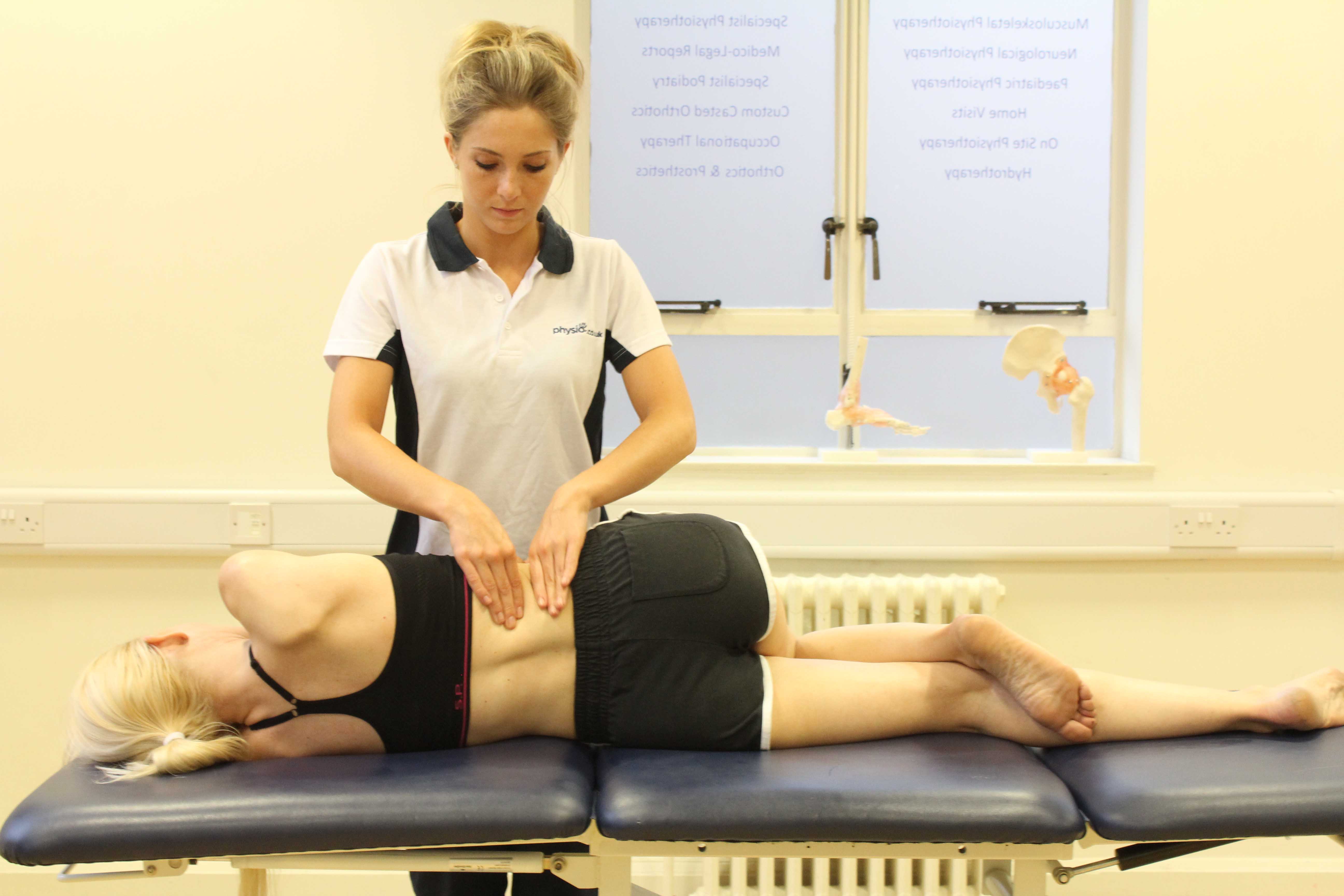 Above: Wringing technique massage applied to obliques
Above: Wringing technique massage applied to obliquesWringing is used to treat tight muscles. When muscles are tight, muscle fibres become stiff and rigid which limits movement. The cause of tight muscles can be a combination of poor posture, overuse, muscle imbalance and emotional stress. Wringing can decrease tightness by increasing temperature of soft tissues, increasing blood circulation and removing waste products. An increase of temperature and blood circulation allows the muscles to relax. The removal of waste products from the muscles relieves tension and helps decrease tone.
Wringing is a massage technique that can be used to promote a relaxation effect. Wringing increases temperature of the soft tissues and stimulates the release of feel good hormones. The movements of wringing stimulate the increase of temperature by increasing the blood circulation by vasodilation. Vasodilation is the widening of blood vessels which allows more oxygenated blood to be delivered to the muscles. Wringing also stimulates the release of feel good hormones in the body. Feel good hormones such as endorphins, serotonin and dopamine help stimulate the parasympathetic nervous system. The parasympathetic nervous system provides emotions such as calmness and content.
Wringing is also a common massage technique used within a post event massage. Wringing is used post event to help remove waste products from out of the muscles. Waste products such as lactic acid are produced in the body due to the high levels of energy produced through exercise. Muscles cannot always flush out waste products naturally. Massage techniques such as wringing increase the tissue permeability which allows the exchange of waste products to be removed.
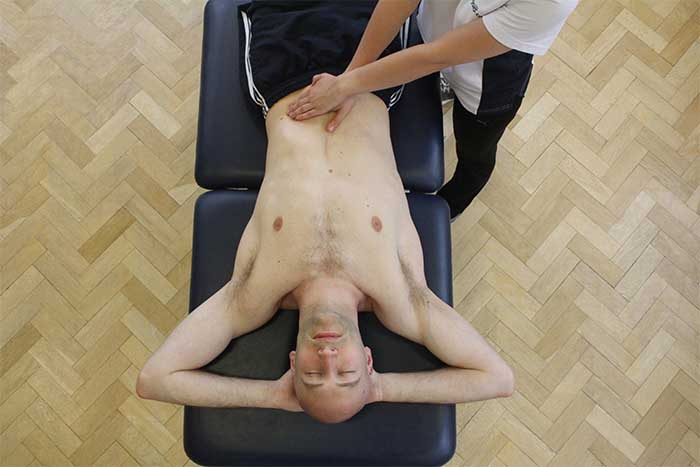
What are the physiological effects of wringing?
Massage can produce many important physiological effects on the body. The physiological effects of wringing include:
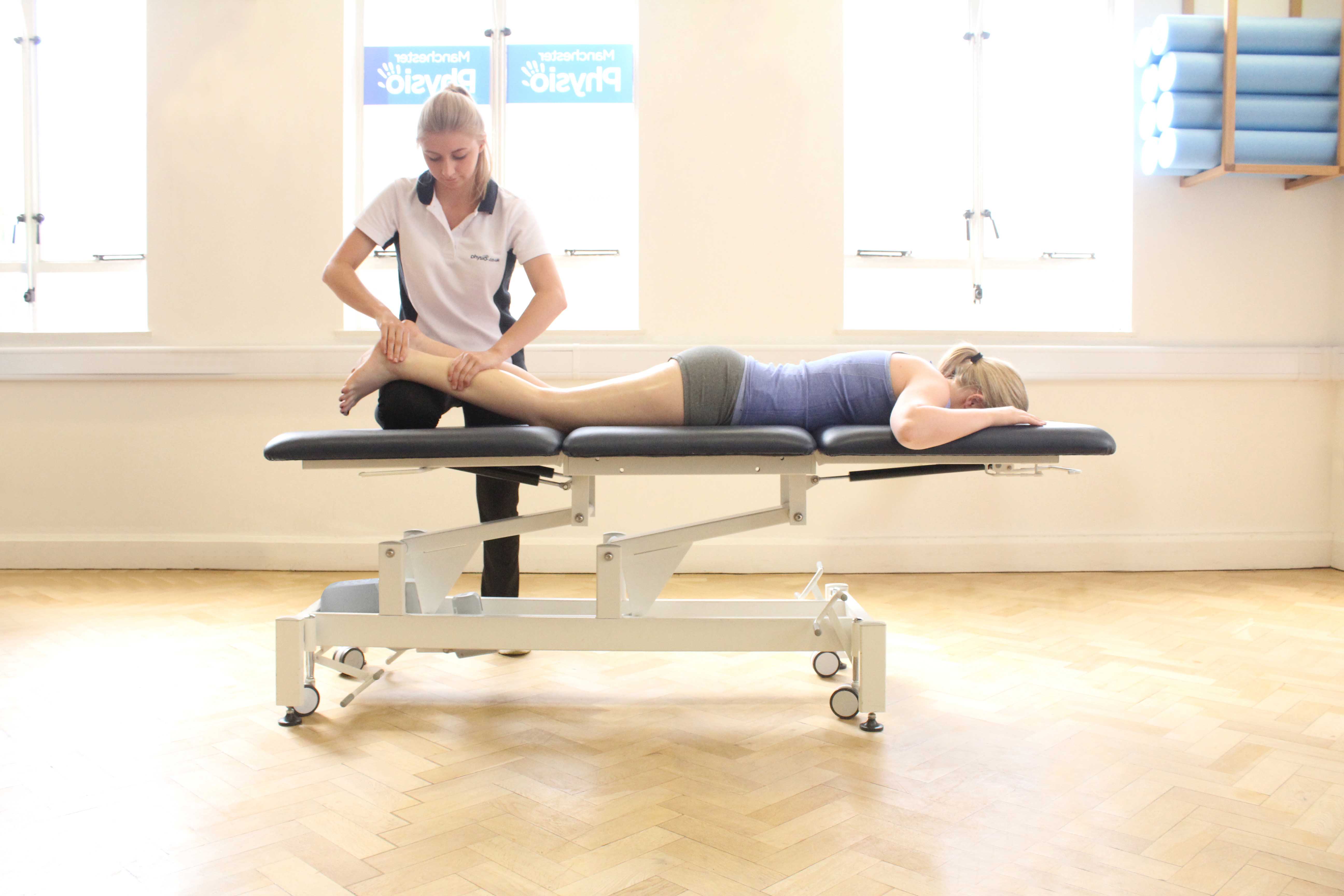 Above: Wringing technique massage applied to soleus muscle
Above: Wringing technique massage applied to soleus muscleWringing increases temperature of the soft tissues. The friction against the skin increases vasodilation and capillarisation in the blood flow. The increase of blood flow will raise the temperature of an area. Increased temperature of soft tissues will aid relaxation and relieve pain.
Wringing also increases venous return in the body. Venous return is the increase of blood returning to the heart. The alternate squeezing and releasing of the tissues increases the flow of circulation around the body. The increased blood flow will increase metabolism and improve the condition of tissues.
Wringing also increases venous return in the body. Venous return is the increase of blood returning to the heart. The alternate squeezing and releasing of the tissues increases the flow of circulation around the body. The increased blood flow will increase metabolism and improve the condition of tissues.
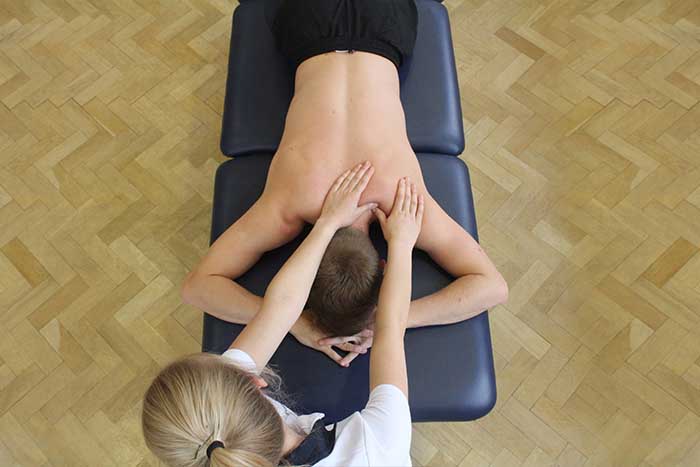
What are the benefits of wringing?
Wringing has many benefits. The benefits of wringing include:
- Relieved tight muscles
- Reduced delayed onset muscle soreness(DOMS)
- Improved recovery
- Improved relaxation
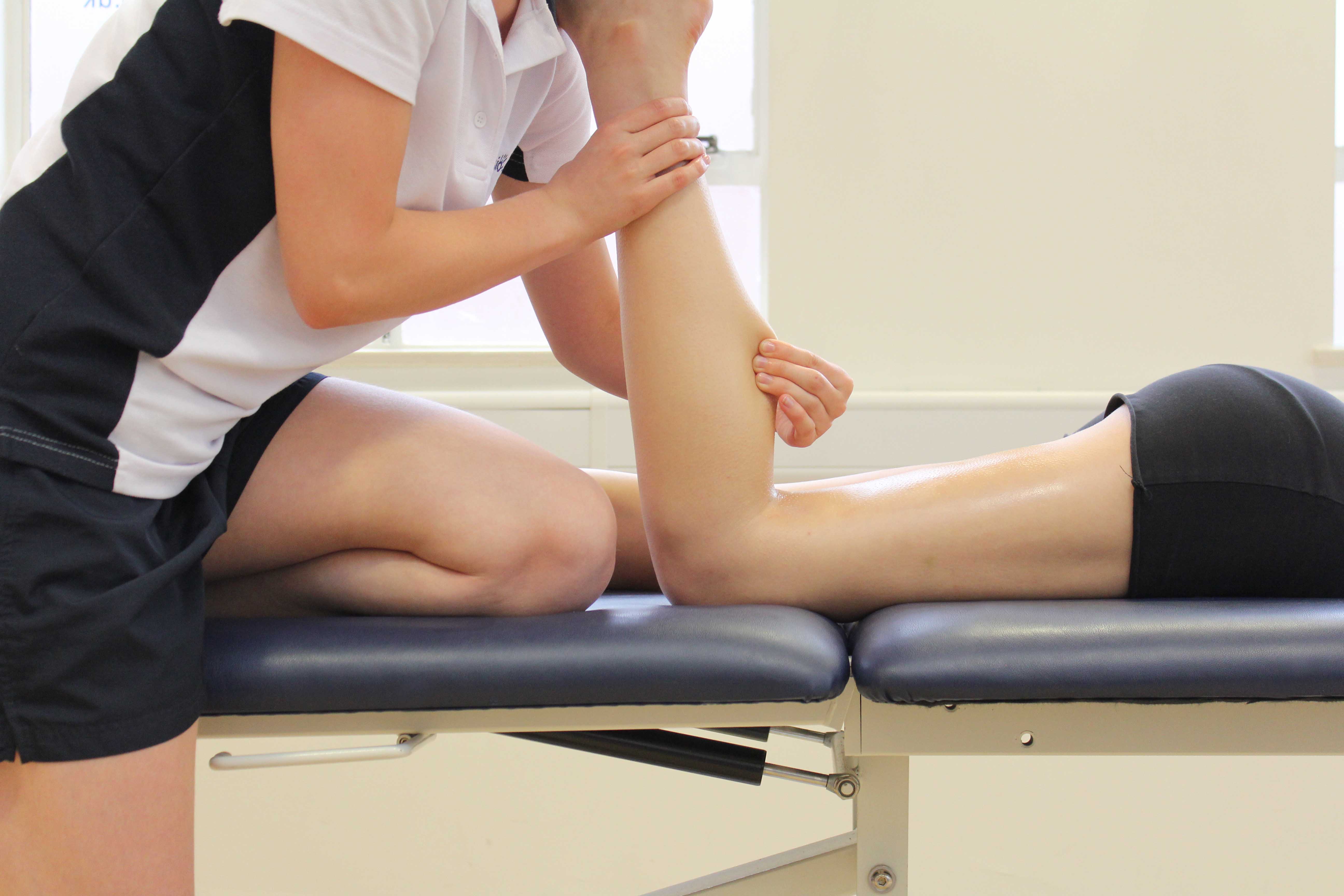 Above: Wringing massage technique applied to gastrocnemius
Above: Wringing massage technique applied to gastrocnemiusOne benefit of wringing is the relief of tight muscles. Wringing is an effective and beneficial massage technique to relieve tightness. Wringing helps tight muscles by increasing the temperature of the soft tissues, increasing blood circulation and removing waste products. The lifting and squeezing technique of wringing can increase the tissue elasticity and it allows lengthening of shortened tissues by injury.
Wringing is a beneficial treatment to reduce the symptoms of delayed onset muscle soreness (DOMS). DOMS occur within 24-48 hours after exercise. DOMS is the result of microscopic tearing of muscle fibres which can be associated with inflammation and pain. Wringing can be performed as part of a post event massage. Post event massage reduces inflammation and helps reduce any muscle soreness. Wringing allows a quicker recovery and a faster return to training without soreness or stiffness.
Wringing is also beneficial to help improve recovery. Wringing can help to treat muscles after exercise, injury or surgery to assist in the recovery process. Wringing can improve recovery by increasing the repair of damaged cells in the muscles and flushing out waste products. Wringing increases more oxygen and nutrient filled blood to the tissues that can repair damaged cells. The removal of waste products also increases the recovery of muscles and allows the return of participation in exercise to be quickened.
Common body parts treated by wringing
There are many common body parts that can be treated with wringing. Common body parts treated by wringing are:
Wringing can also be performed on other areas of the body and be effective to relieve muscle tightness.
Summary
Wringing is a part of the petrissage massage group. Wringing is performed onto large areas of muscle, for example, lower back, thigh and calf. The wringing technique consists of lifting and squeezing the muscle forwards and backwards. Wringing is used to treat tight muscles, for relaxation and as part of a post event massage. The benefits of wringing are relief of tight muscles, reduced DOMS and improved recovery. Wringing is an effective massage technique to improve the condition of muscles. Massage therapists at Physio.co.uk can use wringing as an effective massage technique to treat a range of conditions.
How can I arrange a wringing massage treatment?
The easiest way to arrange a wringing massage treatment at Physio.co.uk is to email us at office@physio.co.uk or call us on 0800 033 7800.
Alternatively if you have any questions please feel free to contact us.
We offer a 7 day service and provide home and clinic appointments.

 0330 088 7800
0330 088 7800


































